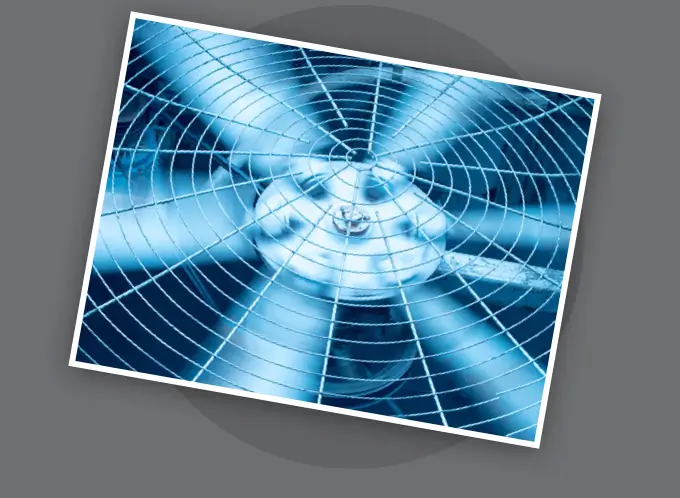Air Conditioning
& Variable Flow
Air Conditioning is the process applied to the air supply to ensure its suitability for a particular space, eg a theatre, classroom etc. It controls the temperature and humidity, and when combined with ventilation, provides good indoor quality. Good air quality is particularly important as it creates a good learning environment in colleges and schools, as well as alertness and productivity in offices.

Humans like a room temperature of 18 – 23°C and a relative humidity of 30 – 70%. ‘Relative’ humidity is a percentage measure of humidity compared to the maximum possible humidity.
Air conditioning is an integral part of the function of the AHU (Air Handling Unit). The AHU recycles air and introduces fresh air.
The air is then ‘conditioned’ for the particular room space, eg classroom etc.
As the air passes through the AHU the air temperature and humidity are adjusted by a series of water coils (technically Heat Exchangers) passing heating / cooling from the water into the air stream.
System Efficiency
To ensure system efficiency, the water flow through the coils is controlled to ensure the correct heat transfer from the water to the air. This is measured as a temperature difference between the flow and return pipework – referred to as Δt (Δ is the Greek letter used to denote difference, in this case difference in t, temperature).
Discrepancies between design Δt and actual Δt have a major effect on the efficiency and consequently the whole life running costs of the system. Therefore, by ensuring the correct Δt values, which relates to water flow rates across the coils, high system efficiencies can be achieved.
Within modern systems, designed with variable speed pumps to allow variable flow rates, consideration has to be given to the continually changing system pressures.
By installing DPCVs (Differential Pressure Control Valve) at strategic positions to ‘protect’ control valve authority, or replacing control valves with PICVs (Pressure Independent Control Valves), correct Δt values can be achieved, thus ensuring system efficiency.